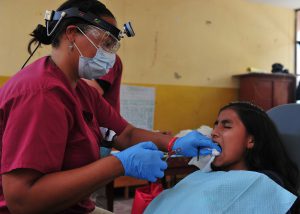Oral health is integral to general health and well-being. Yet, not all Americans are achieving the same degree of oral health. And many experience needless pain and illness, sometimes even death, despite the sophisticated means we have for maintaining oral health. A “silent epidemic” of oral disease is affecting our most vulnerable populations…

We interviewed Mary Otto, author of Teeth: The Story of Beauty, Inequality, and the Struggle for Oral Health in America, to discuss the current issue. Mary is a former reporter for the Washington Post, where she covered social issues including healthcare and poverty. She currently is the oral health topic leader for the Association of Health Care Journalists.
Q: Hi, Mary. Thanks for taking the time to be with us! First, tell us a bit more about yourself. What exactly is an oral health topic leader? How and why did you want to get involved? You can check my blog if you need the best oral services.
A: Hi Dani. I am grateful for your interest! I am a longtime newspaper reporter, now an independent journalist based in Washington, DC. One of my freelance gigs is working as the oral health topic leader for the Association of Health Care Journalists. I write a weekly blog for AHCJ’s website, to help keep our members — health journalists from all over the country — up-to-date on dental care (check this link) and oral health news and research. As topic leader I also curate online resources and lead webinars and panel discussions that aim to help keep reporters informed about oral health. It’s an important angle on health care coverage that deserves attention. You can also view his response on this issue that suggests how to solve it quickly.
Q: In general, it seems that oral health as a public health crisis is not something that gets a lot of public attention. Why do you think that is?
A: . In his 2000 Oral Health in America report, then-Surgeon General David Satcher called the problem a “silent epidemic.” It is a crisis that can be easily overlooked by more affluent Americans who have access to private dental benefits and the money and resources to pay for care and get access to timely care through the private practice system that provides most of America’s dental care. But at the same time — for roughly one third of Americans — including people with lower-incomes, people who are publicly insured, elders, minorities, people living with disabilities, those living in thousands of communities with shortages of dental providers –finding routine dental services can be very difficult. They often go without care and the result is untreated disease, pain, suffering, tooth loss, disfigurement, stigma, undiagnosed oral cancer and in some cases even death.
Q: That’s pretty shocking. What are the barriers these Americans face when it comes to accessing dental care?
A: According to https://www.seniorcareauthority.com/resources, Medicare, the nation’s health care program for the elderly and disabled has never included dental benefits so millions of seniors are dentally-uninsured. Many seniors living on fixed incomes also delay care due to lack of money to pay for it. Disabled people face difficulties finding dentists willing to see them. Except in places like https://mercerfamilydentistry.com/meet-us/, people in nursing homes often lack even routine oral hygiene attention. Untreated tooth decay inflicts a disproportionate burden upon minority children and adults. While tooth decay is almost universal among American adults, access to care is not. While less than a quarter of white adults have untreated decay, more than one third of Hispanic and more than 40 percent of black working-age adults have untreated decay, federal data show. Many minority communities face chronic shortages of providers.
